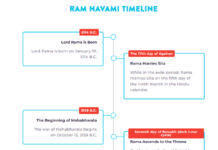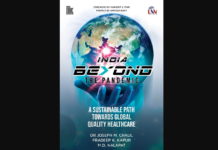India Post News Service
SACRAMENTO, California: With spring fast approaching, California Assembly member Kansen Chu continues his work on AB 7, which will eliminate the biannual clock change in California and set the state on Daylight Saving Time year-round, pending federal authorization.
Chu introduced AB 7 in response to 60 percent of voters supporting Proposition 7, which authorized the Legislature to consider eliminating the clock change if two-thirds of the Legislature approves the measure, and the Governor signs the bill.
“As we get ready to change our clocks and lose one hour of sleep on Sunday, we must be weary of the negative health effects of this practice,” said Chu (D-San Jose) in a statement.
“Countless studies show that sleep loss alone causes tragic accidents on the road and in the workplace. In the wake of the convincing support of Proposition 7, it is clear that voters want to do away with the biannual clock change. That’s why I’m working on AB 7, which will eliminate the spring forward and fall back, and set California on Daylight Saving Time year-round,” he stated.
“While this practice was instituted to save energy, research shows that this is no longer the case and the practice is bad for public health and safety. We are not at all alone in reconsidering this practice. At least 28 states have introduced related legislation this year, putting pressure on the federal government to act. The time is now.”
AB 7 has been referred to the Assembly Governmental Organization Committee and the Assembly Utilities and Energy Committee. The bill has not yet been set for a hearing. AB 7 will place the state on Daylight Saving Time year-round. Federal authorization is needed to move forward. Earlier, Senator Marco Rubio filed federal Senate Bill 670 to place the country on Daylight Saving Time year-round.
Throughout the years, countless studies have shown the numerous adverse effects of switching clocks twice a year and the benefits to daylight saving time.
Specifically, these studies reveal the following negative health, safety and environmental effects:
- SIGNIFICANT ELECTRICITY AND ENVIRONMENTAL COSTS: A study in Indiana showed the policy costs residents $9 million per year in electricity bills. The same study found social costs of pollution ranging from $1.7 to $5.5 million per year, and suggests these costs would be higher for other states.
- DEADLY MEDICAL EMERGENCIES: Risk of heart attack increases by 25 per cent the Monday following the switch. Additionally, researchers found that strokes are 8 per cent more likely to occur in the two days following the “spring forward” time change, with that figure jumping to 25 per cent among people with cancer and 20 per cent for those aged 65 or older.
- FATAL TRAFFIC ACCIDENTS:National data showed an increase in fatal traffic accidents from the average of 78.2 to 83.5 on the “spring forward” Monday.
- WORKPLACE INJURIES: Employees had 5.7 per cent more workplace injuries the day following the loss of an hour of sleep when shifting to daylight saving time. Employees lost 67.6 percent more work days due to workplace injuries.
Studies show these benefits of staying on Daylight Saving Time:
- INCREASE IN PHYSICAL FITNESS FOR CHILDREN AND ADULTS: Research shows that children have more hours of physical activity during daylight saving time, and a general increase by 62 per cent in pedestrian and 38 per cent in cyclist activity during the evening.
- IMPROVEMENT IN PUBLIC SAFETY: Robbery rates for the entire day drop 7 per cent and for that extra evening hour gained when switching the clock during daylight saving time, robbery rates dropped 27 percent.
- INCREASED DAILY CARD SPENDING:A study of Los Angeles showed a 3.5 per cent drop in per capita daily card spending during standard time. Specifically, grocery stores are critically impacted losing 6 per cent of daily retail, and retail and discount stores lose 4.5 percent in daily spending.







